

PAGE THREE
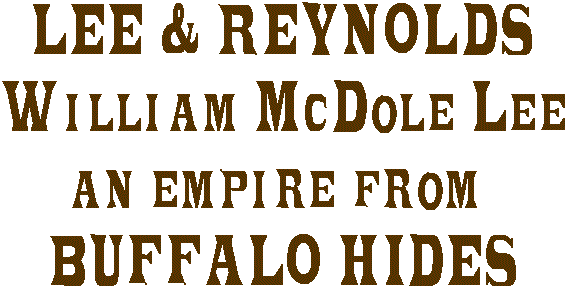
I was only about 8 years old, and we had been watching westerns on TV. My father slowly rubbed his chin, and spoke softly, "You know, I can remember my old Pappy telling me about him seeing thousands upon thousands of buffalo hides. All stacked up higher than a man is tall." His daddy came to Texas in 1874.
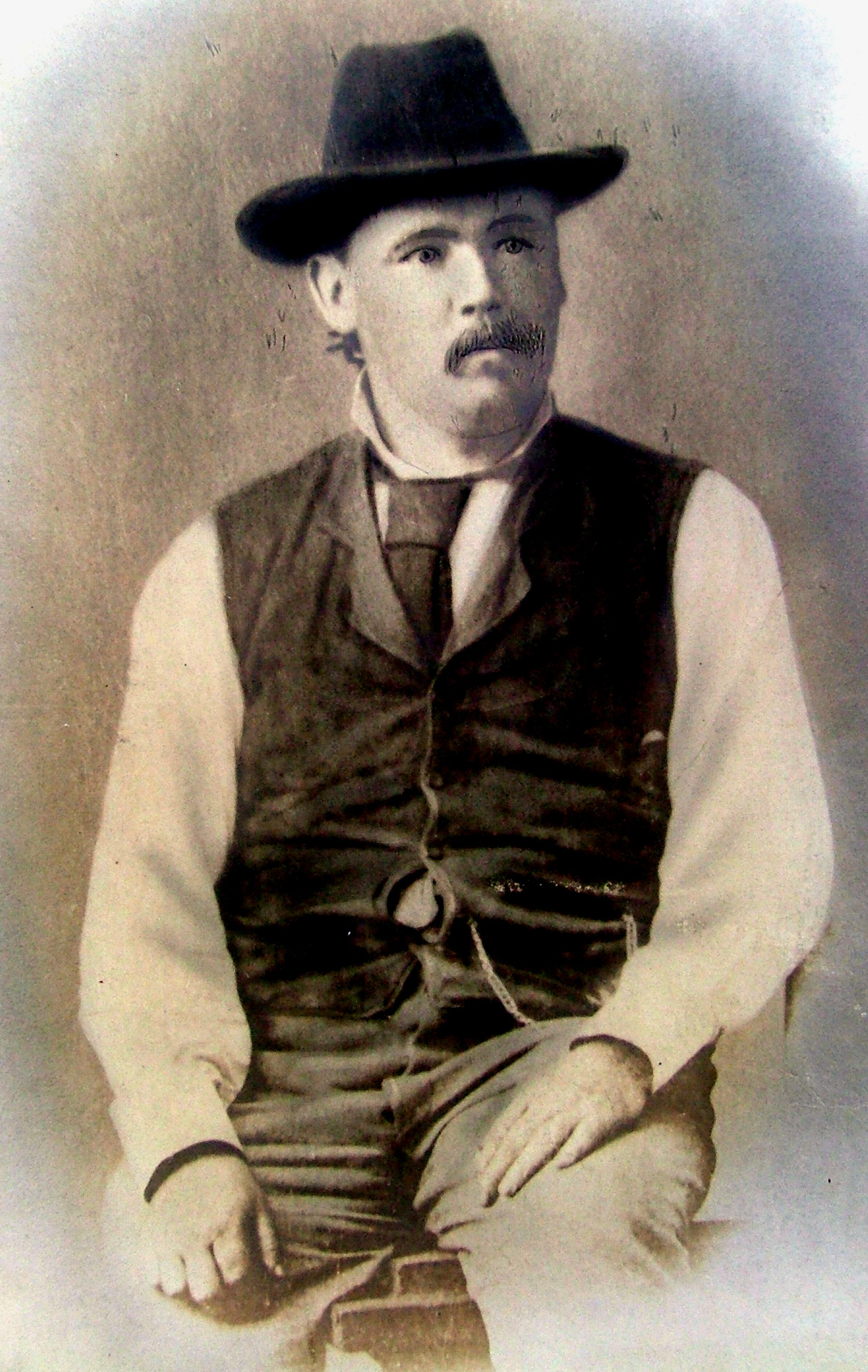
My grandfather, Claiborne Harrison Adams saw bison hides in Ft. Worth stacked high as a man is tall.
THE TOKENS:
LEE & REYNOLDS / CAMP / SUPPLY / IND. TER.
GOOD FOR / ONE DOLLAR / IN / MERCHANDISE / IN OUR INDIAN / TRADE
brass-round-25mm reeded edges(circa: 1873-1881) (reproductions exist)
(estimated value: $75-$95)
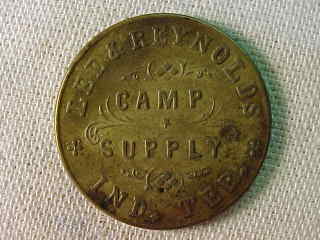
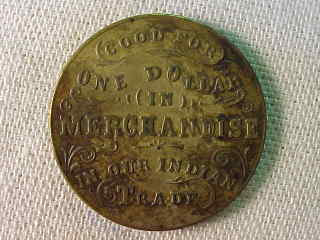
This token is listed on page 40 of the "Catalog of Oklahoma Tokens" by Lloyd C. Walker (1978), and is listed as Curto #69 in his 1951 listing of post trader tokens. B. P. Wright, in his "American Business Tokens" lists another variety as his number 590:
LEE & REYNOLDS / TRADE CHECK / CHEYENNE AGENCY
(buffalo charging)
nickel-round-31mm (circa: 1873-1881)
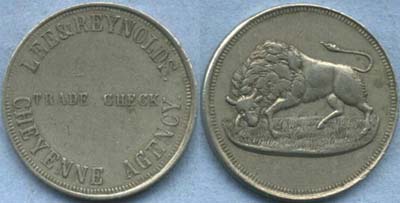
William McDole Lee (W.M.D. Lee) was born on August 25, 1841 at Eaton, Pennsylvania, to Perry and Esther Lee. The family later moved to Portage, Wisconsin in the 1840’s.
Camp Supply, 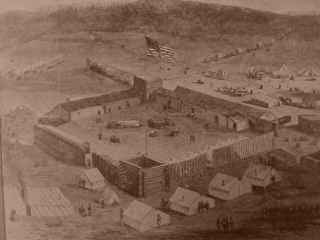 Indian Territory
Indian Territory
CAMP SUPPLY, INDIAN TERRITORY:
Camp Supply, I.T. was located in far northwestern Indian Territory, near the convergence of Wolf Creek and Beaver Creek, where they form the North Fork of the Canadian River. The post was formed in November of 1868, when General Sheridan approved the site as headquarters for a winter campaign against the southern Cheyenne nation. Major George Armstrong Custer and elements of the Seventh Cavalry opened the campaign with a surprise attack against Chief Black Kettle’s band. This infamous attack became known as the Battle of the Washita River. Over 150 men, women and children were killed in this battle.
The name of the post was changed to Fort Supply in 1889.
William M.  D. Lee
D. Lee
LEE AND REYNOLDS:
William Lee’s first job was as a driver for the Wells Fargo Company. His route connected several Kansas towns. When the Civil War broke out, he joined the Union Army and served as a quartermaster with Sherman’s army. At age 28, in the fall of 1869 he became partners with Albert Eugene Reynolds. Reynolds was already in business as a post trader at Fort Lyon, Colorado. He was born Feb. 13, 1840 in New York, his father a shopkeeper. Reynolds had already owned businesses in Leavenworth, Kansas, Richmond, Missouri, and then Fort Lyon, Colorado. Lee had opened a business at Camp Supply in the summer of 1869, prior to receiving official permission from the government. The army granted Lee and Reynolds permission to do business as sutlers at Camp Supply on November 15, 1869. There were at least three other sutlers doing business at Camp Supply at that time. Lee and Reynolds also hoped to expand their business into the area of Indian traders with the Cheyenne and Arapaho tribes. Lee had at first been refused a license to trade with the tribes, as two other firms were already in that business. Somehow, Lee convinced the superintendent of the Bureau of Indian Affairs to grant them a right to trade.
The sight that greeted "Mac" Lee, upon his arrival at Camp Supply, on 10 December 1869, was a real frontier fort. A cut log palisade around a headquarters and parade ground, with two corners of the palisade open, and picket buildings, tents, log buildings of various sizes, and smoking chimneys and camp fires completed the picture. Wild buffalo and game animals were still abundant on the surrounding plains.
THE KILLING OF THE BUFFALO:
During the "Great Buffalo Kill" of the mid 1870’s, Lee established buffalo hide outlets in New York City and Chicago. The trade in buffalo robes became the main money maker for the firm of Lee and Reynolds.
Some naturalists believe that at the time of the landing of Columbus, there were as many as sixty million buffalo ranging over North America. There were estimates that half a million could be killed annually without destroying the herds. The American Fur Company, during the ten year period from 1835 to 1845, bartered for 90,000 select buffalo hides from the Indians of Montana and Dakota. Those 90,000 select hides represented about 120,000 animals. The killing of the buffalo by the non-Indian professionals began in earnest by 1870. One sutler turned buffalo hunter, after a long bearded plainsman in a pair of old greasy overalls strode into his store in 1877, and said, "Give me three kegs of powder and about four hundred pounds of lead." By 1887, only about 1,100 buffalo remained in all of the North American continent.
Buffalo 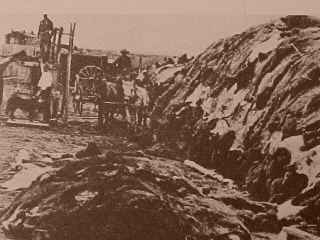 hides
hides
HOW THE TOKENS WERE USED:
In the winter of 1871-72, the Cheyenne Indians hare cured about 10,000 buffalo robes for trade. The following winter, the Cheyenne and Arapaho tribes combined had about 17,000 to trade. The volume of business at Lee and Reynolds was so great by 1873, that a system was devised to pay the Indians with "trade checks", and the exchange rate at that time was about 10 tokens for each robe, and the 10 tokens worth about $5.00 in trade at the store. (Note: the discrepancy between this statement and the token value of "one dollar in our Indian trade" on the Camp Supply tokens, may be explained as the difference in L & R’s wholesale cost of trade goods versus the retail value stated on the tokens) By 1875, most of the buffalo herds have moved south into Texas, near Double mountain. They were followed by five thousand hunters, skinners and freighters. The hides were hauled by wagon back to the Lee and Reynolds agency where the Indians were paid in tokens for tanning the hides. The pay rate in 1877 for the white hunters was from $4.50 for a bull buffalo to $2.50 for a cow buffalo. This was at a time when a farm hand earned $20.00 per month. The rate for the Indians for tanning the hides was 4 tokens (valued at two dollars) per hide. In the year 1877, the Indian woman tanning the hides had earned about $30,000. An entire town was built in January 1877 to serve the buffalo hunters. It was called Reynolds City, and was located ten miles south of the Double Mountains, near the present community of Rotan, Texas. Hides were also freighted to Ft. Worth, Ft. Griffin, San Angelo, and other purchase points.
WHAT THE TOKENS BOUGHT:
During the winter of 1872-73, an inventory of Lee and Reynolds trading stock revealed much of what the Indians bought with their tokens: $845 worth of beads, bracelets and chains, 317 shawls, 10 dozen handkerchiefs, 44 vests, 135 Indian saddles, almost $5,000 worth of cloth and trinkets, 100 New York City umbrellas, bags of coffee, sugar, flour, boxes of tobacco and blankets. The next year, they added cartridges and pistol caps to their trading goods.
By 1878, the firm of Lee and Reynolds was considered the largest of all the merchandisers located in the southern plains. Lee began to broaden his holdings into cattle with the LE Ranch, and the LR Ranch near Camp Supply in 1876. Later the LE Ranch bought land in Oldham and Hartley counties of Texas. Reynolds joined Lee in the LR ranch, while the LE was Lee’s personal venture.
THE END OF THE LEE AND REYNOLDS PARTNERSHIP:
The partnership of Lee and Reynolds dissolved in the summer of 1881, and Lee became the partner of Lucien Scott who was a banker from Leavenworth, Kansas. During the years that followed, Lee helped to charter the American Angus Association and he is credited with bringing the first herd of Aberdeen Angus cattle west of the Mississippi River.
By 1888, Lee was associated with the XIT Ranch (the Texas Capitol Syndicate) in the organization of the Brazos River Channel and Dock Company. The purpose of this company was to open the first deepwater port on the Texas coast. The port was successfully opened at Velasco in December of 1891.
After other busisness ventures in tugboats, barges, and lumber, Lee turned his sights to the oil business. He sucessfully prospected for oil from 1906 until 1925 in areas at West Columbia, and Spindletop, Texas.
Over the course of his life, Lee was married twice, first to Orlina Whitney of Columbus, Wisconsin. They had a son, and an adopted daughter. The first Mrs. Lee died in 1900, and at age 81, Lee married a 41 year old drama instructor, Leila Schumacher of Arkansas.
After a life that spanned the Civil War and the taming of the frontier, the old Indian trader and oilman died in Houston on January 6, 1925. Albert Reynolds had died in March of 1921, at age 81.
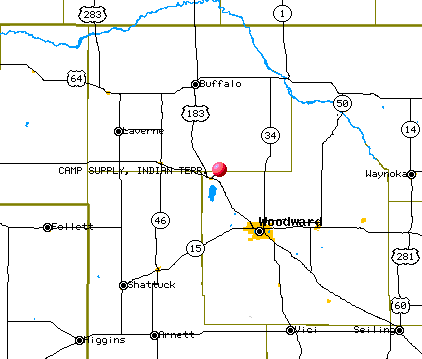
references: The Handbook of Texas; Indians, Cattle, Ships and Oil: The Story of W. M. D. Lee, by Donald Schofield; Texans, Guns & History, by Col. Askins; Cowboy Justice, A Texas Frontier, The Clear Fork Country and Fort Griffin, by Ty Cashion ; Fort Supply, Indian Territory by Robert C. Carriker.
on to page 4 of our web pages...
updated: 30 nov 2006